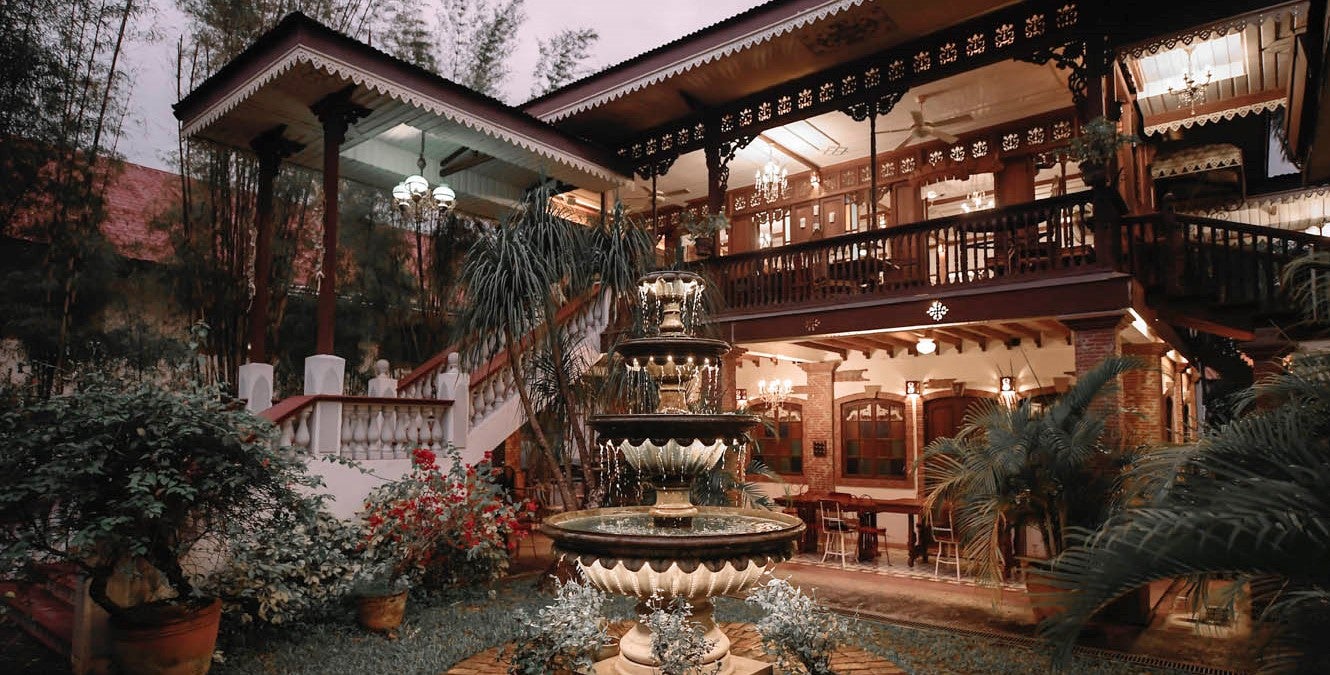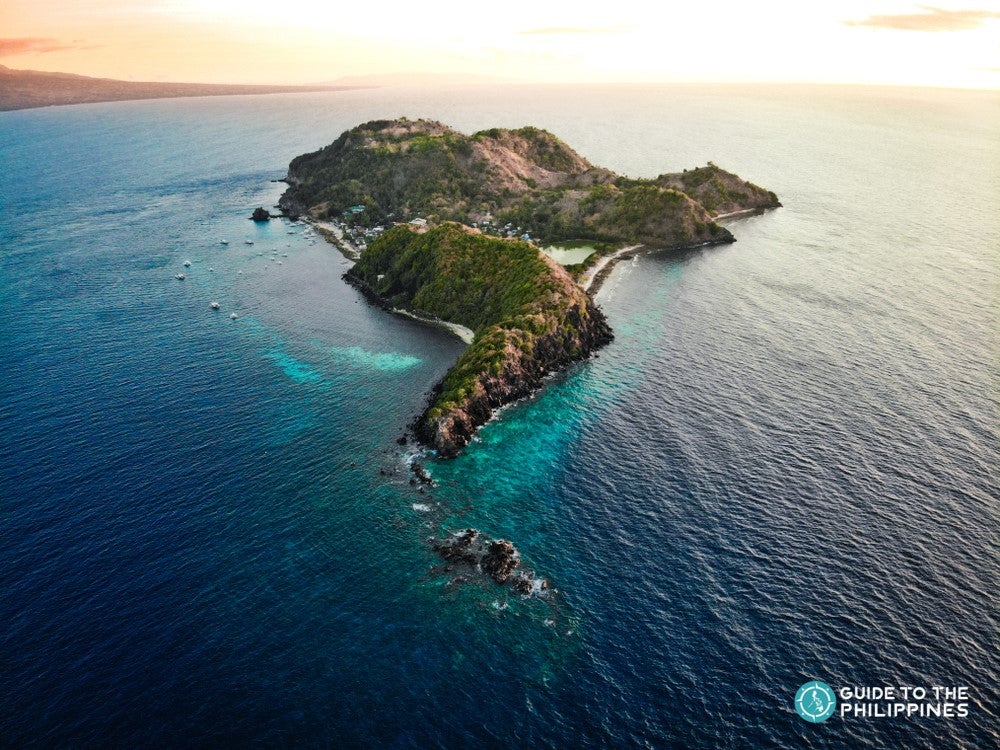Escape from the city noise and savor the fresh air in the province of Laguna. Treat yourself to a rejuvenating vacation at its numerous hot spring resorts near Manila and find out why it is a popular weekend destination.
Laguna, formerly known as La Provincia de la Laguna de Bay, occupies the northern part of CALABARZON. Its name is derived from Laguna de Bay, the largest lake in the Philippines that stretches over the southeastern part of Manila, the capital city of the Philippines. Laguna is a Spanish word translated as a lagoon or a large body of water near a river.
The province is also the birthplace of the Philippine national hero, Jose Rizal. It is home to several national heritage sites, iconic landmarks, Laguna resorts ranging from hot springs to lake resorts, and various natural tourist spots near Manila.
- Find the best resorts in the Philippines for your vacation
- See Santorini-inspired resorts in the Philippines
Laguna is just a 2-hour drive away (30KM) from Manila, perfect for travelers planning a quick getaway. Read on this travel article to find out the best Laguna tourist spots that you should add to your itinerary.
- Check out our list of the best farm resorts near Manila and the top affordable resorts near Manila
12. Japanese Garden
The Japanese Garden is one of many historical sites in Laguna. It is situated in Cavinti along the popular Lake Caliraya. This beautiful garden was constructed in the 1970s to commemorate the Japanese occupation of the Philippines in World War II.
When you enter the grounds, you will be greeted by a large torii or a traditional Japanese gate. These gates are often placed in shrines or spots that hold religious significance to let visitors know that they are about to enter a sacred space. Past the gate, you will see open spaces of grass and towering trees that offer shade for those hoping to enjoy a picnic. Further on, you will find a still, man-made lagoon that adds to the overall tranquil atmosphere of the garden.
A cement bridge over the lagoon leads you to a tall set of stairs. At the top of these steps, you will find yourself in another spacious area of the garden where a solemn altar sits. The Philippines-Japan Friendship Society built the shrine to honor Japanese soldiers who lost their lives during World War II. It is also rumored that the Yamashita Treasure, alleged war loot stolen by Japanese forces during the war, is buried within the garden's grounds.
Along with the zen-like appeal of the garden, visitors can also climb a set of stairs to a hilltop. From here, you can get a panoramic view of Caliraya Lake, which is another well-known spot in Laguna.
11. Hulugan Falls
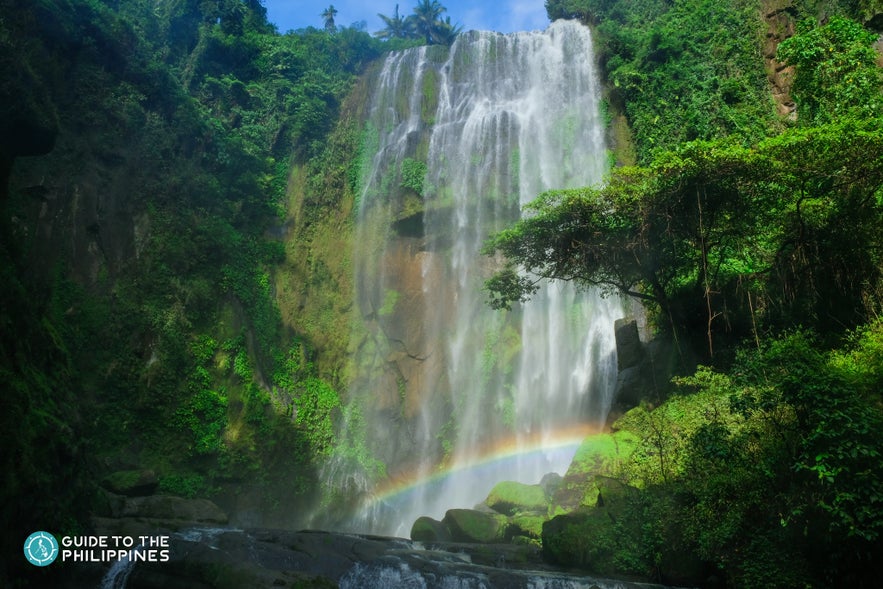
This enchanting waterfall is one of the relatively known cascades in Baranggay Salvador, Luisiana, Laguna. It has caught the attention of many tourists, making it one of the must-see waterfalls in the Philippines. Since it is nestled in a far-flung area, the roads leading to the falls are not easily accessible.
To get there, you have to traverse a one-way trail. You will pass by two waterfalls before reaching the Hulugan Falls. First, you will hike down the river to see Talay Falls. You will scramble through a more challenging and steep path to the Hidden Falls. Afterward, you will descend to a muddy trail before arriving at your destination, the Hulugan Falls.
You can take a refreshing dip into the natural pool below the column. If you want to get closer to the gushing waterfalls, be extra careful when climbing the rocks because some of them are off-limits.
The best time to visit the falls is between December to February since the weather is ideal for a long hike. Many travelers flock to the falls during the summer months.
Most travelers visit Hulugan Falls on a day tour, but you may also opt to stay overnight at the campsite. However, you have to bring your own tent. There is also a camping fee per person. Your guide in waterfalls tours will look after you to ensure your safety. There aren’t many amenities on-site, but there is a restroom that you can use.
10. Nagcarlan Underground Cemetery
 Photo by NHCP Museo ng Libingan sa Ilalim ng Lupa ng Nagcarlan
Photo by NHCP Museo ng Libingan sa Ilalim ng Lupa ng Nagcarlan
Another must-see attraction in Laguna is the Nagcarlan Underground Cemetery, which is situated inside a chapel. It sits on a hilly terrain in the laid-back town of Nagcarlan in Barangay Bambang. You can find the catacombs where the friars and wealthy people were laid to rest at the chapel's lower ground floor.
During the revolution, it served as a hiding place for guerrillas who resisted the Japanese occupation in World War II. It was built in 1845 under the supervision of Franciscan Fr. Vicente Velloc.
In 1981, Nagcarlan Underground Cemetery was declared as a National Historical Landmark. Its iconic structure is currently under the supervision of the National Historical Commission of the Philippines.
From ornamental iron grills to brick walls, this historical and religious structure showcases beautifully preserved architecture, dating back to the 18th century before the Philippine revolution.
Upon entering the chapel, a curator will provide a historical background of the underground cemetery. The grand arched gate and walkway will lead you to the chapel. You will see the entrance of the cemetery on the right side of the chapel’s main door.
You will go downstairs to the dungeons of the underground crypt, where you will witness apartment-like compartments on the walls. The chapel’s upper ground provides a bit of light to the cemetery’s dark interior.
When taking pictures, you are not allowed to use the flash of your cameras inside the cemetery. If you want to purchase souvenirs, there is a small table displaying postcards, religious materials, and local treats on the left side of the chapel’s entrance near the wooden door.
9. Enchanted Kingdom
 Photo by the Enchanted Kingdom
Photo by the Enchanted Kingdom
If you're seeking fun and exhilarating adventures near the metro, you may want to visit the Enchanted Kingdom in Barangay Balibago, Santa Rosa City, Laguna. It is considered the first and only world-class theme park in the Philippines.
Enjoy unlimited rides inside this 25-hectare park that features eight themed zones with over 20 attractions. These attractions range from interactive motion theaters to extreme rides such as Space Shuttle, Anchor’s Away, Rio Grande Rapids, EKstreme Tower, Roller Skater, Fun Kart, Disk-O-Magic, Jungle Log Jam, and Air Race.
AGILA: The EKsperience is their latest attraction that showcases around 20 majestic spots in the Philippines, from Batanes to Cagayan de Oro. It is the first and the largest flying theater in the world.
By showcasing the beauty of the Philippine Archipelago, AGILA takes you in an interactive flight simulation to appreciate and understand the importance of saving the environment for our critically endangered animals like the Agila.
Enchanted Kingdom offers an unforgettable magical experience with your friends and family. Those who want to celebrate their birthday at the theme park can get a free pass for all rides and a 10% discount on regular day tickets for their companions.
If you are looking for souvenirs or unique EK items, you can drop by Edgar’s Specialty Shop for character pillows, shirts, or hand-sewn key chains. You can also explore other shops scattered around the theme park, including Harry Houdini’s Magic Shop and Princess Victoria’s Dream Shop for adorable gowns and tutus.
8. St. John the Baptist Church
 Photo by Saint John the Baptist Parish Liliw, Laguna
Photo by Saint John the Baptist Parish Liliw, Laguna
One of the must-see heritage sites in Laguna is the St. John the Baptist Church, also known as Liliw or Lilio Church. It is a 400-year-old Laguna church that majestically stands in Liliw town, the Tsinelas Capital of the Philippines.
Your trip to Liliw will not be complete without dropping by the sandal/shoe shops along the highway. Apart from local handicrafts and slippers, Liliw is also known for its sweet delicacies like espasol (toated rice cake) and uraro (arrowroot cookies).
The original wooden structure of the church was established in the early 16th century. Meanwhile, the edifices are composed of red bricks and rocks. In 1880, it was partially damaged by a massive earthquake in Luzon. Then, it underwent reconstruction in 1885. However, it was again partially burned on April 6, 1898.
Franciscan priests Juan de Plasencia and Diego Oropesa established Liliw under Reducción, a Spanish policy that forces smaller settlements into one larger town. The locals used to go to Nagcarlan to attend mass until they were given their own church.
In 1605, it became an independent parish with Father Miguel de San Lucas as the first parish priest. Its feast day, known as the Martyrdom of St. John the Baptist, is celebrated every August 29.
There are giant white statues lined up in front of the church. You can also find gazebos on both sides of the walkway. The church has a bell tower that features Baroque-inspired architecture during the Spanish era. Upon entering the church, you will witness a monumental altar, magnificent ceiling paintings, and glass murals.
7. Mount Makiling
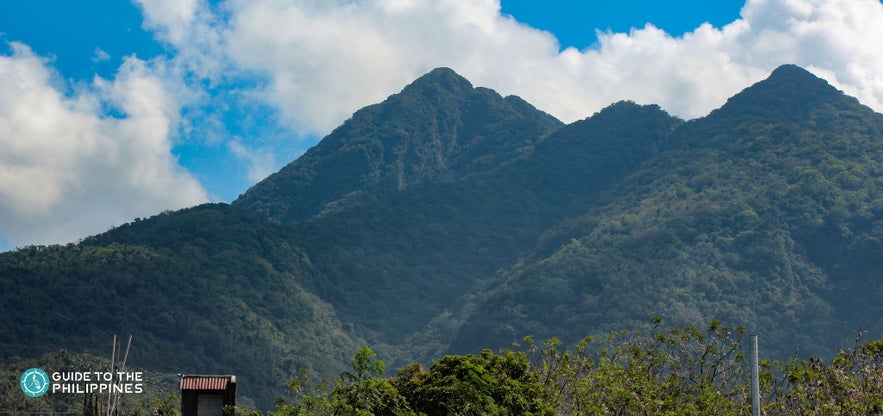
Tucked between the provinces of Laguna and Batangas, Mt. Makiling is a dormant volcano that rises over 1,090 m (3,580 ft) above mean sea level. It is situated south of Laguna de Bay and lies within 61km from Metro Manila. It is one of the top destinations when hiking in the Philippines.
The Mount Makiling Forest Reserve (MMFR) is an ASEAN Heritage Park that spans 4,244 hectares with straddling parts of Los Baños, Bay, and Calamba City in Laguna. Its terrestrial ecosystem is under the University of the Philippines Los Baños and the Makiling Center for Mountain Ecosystems.
Mt. Makiling boasts flourishing plant and animal diversity. It is home to 7,000 species of insects, 181 species of birds, 65 species of reptiles, 45 species of mammals, and 22 species of amphibians. The reserve is also home to various endemic species, including the Philippine Deer, Philippine Warty Pig, Philippine Calotes, and the frog Philautus Sardus.
When joining hiking tours to Mt. Makiling, you can drop by some of its must-see attractions. One of which is the Makiling Botanic Gardens, a 300-hectare plant conservation facility. You can also explore Mudsprings, a volcanic area with a rotten egg smell due to sulfur.
Another sight to behold is the Flatrocks, a natural rock formation with a pile of weathered stones. For those who want to stay overnight, there is a designated campsite at Makiling Rainforest Park.
Mt. Makiling has a moderate difficulty level of 5/9. It has a major hike classification, which takes around 5 to 9 hours to complete the trail. You can join a Makiling Traverse or MakTrav hiking tour to explore this enchanting Laguna mountain.
6. Hidden Valley Springs

Nestled between the famous mountains of Banahaw and Makiling, Hidden Valley Springs is a 3-star private resort featuring lush landscapes and beautiful gardens in Calauan, Laguna. Just a 2-hour drive away (less than 80KM) from Manila, Hidden Valley Springs is among the most-visited hot spring resorts in Laguna.
This paradise-like resort is nestled inside a protected rainforest that features over 150 species of plants. You can find a vast collection of wild orchids, giant ferns, and century-old trees. One of the centenarian trees here is the Amlang Tree, which is already more than 300 years old.
Hidden Valley Springs is a tropical rainforest resort that showcases thermal pools and lagoons. It features around 6 natural spring pools, 2 kiddie pools, and 3 natural Jacuzzis filled with clean and volcanic mineral waters. These natural springs take different temperatures. You can even plunge into the Soda Pool and bask in a water massage.
During your Hidden Valley Springs Resort tour, the lush greeneries and natural wonders of the resort will delight you in its abundant flora and fauna. To get there, you will embark on a short tour around the tropical rainforest. You will go trekking to reach the forest and the nearby waterfall.
After exploring the resort’s majestic paradise, you can enjoy a sumptuous buffet and a hearty Filipino lunch. Then, you can indulge in spa-like baths and appreciate the scenic ambiance of the resort. If you like to spend more rejuvenating time at the resort, there are mini cabins where you can stay overnight.
5. Caliraya Lake
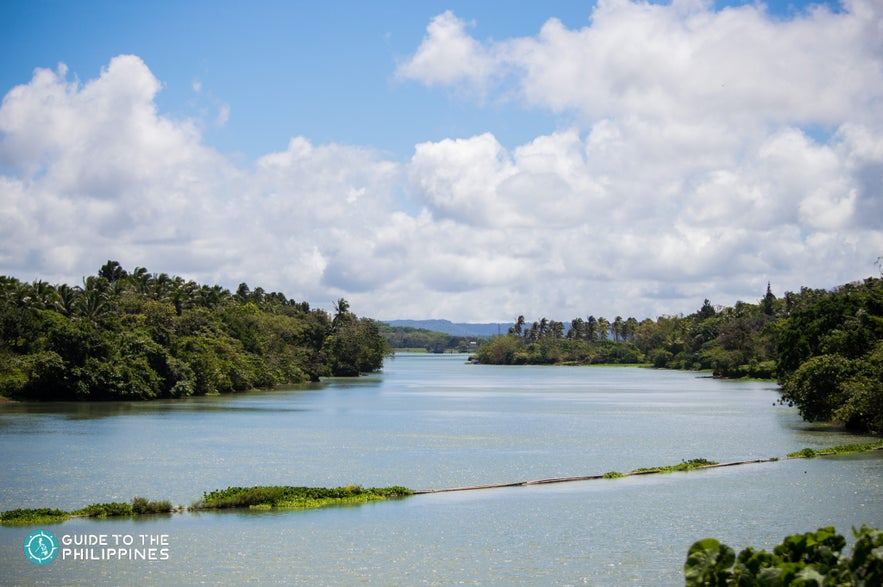
Another scenic attraction in Laguna is Caliraya Lake, a man-made lake in Lumban, Laguna. Caliraya Lake is a haven for various outdoor and sports activities such as golf, jet skiing, windsurfing, largemouth bass fishing, water skiing, and boating. There are also designated campsites for hikers.
Back in the 1930s, a US Army Engineer created the lake by spilling water in the Cavinti valley of the Sierra Madre. Its original purpose was to generate a hydroelectric energy source for the nearby capital city, Manila.
Over the years, Caliraya became a popular bass fishing spot in the Philippines. In the early 1970s, some tourists from Manila commercialized and developed the lake as a recreational area for the city’s elite citizens.
Since then, the lake underwent several concrete and structural improvements, including the construction of a hydroelectric plant. Later on, Caliraya was transformed into a wealthy community similar to those in western countries. However, it became a hideout and territory of the New People’s Army in the 1980s.
In the mid-1980s, the local government sought the opportunity to bring back the vibrant tourism scene in Caliraya. Up to this date, there are already various world-class resorts, golf courses, and country clubs within the vicinity of Caliraya Lake.
If you want to discover Caliraya’s calming scenery, you have to book a stay at Laguna resorts or guesthouses near the lake. Caliraya is home to several staycation spots, from farm cabins to floating lake cottages.
- Check our article on the best private resorts near Manila
Aquascape Caliraya is famous for its chic and wooden cottages with a powered motor that allows you to cruise along the lake. Meanwhile, Caliraya Ecoville Recreation Farm & Resort offers cozy cabin-inspired rooms with a lake view.
4. Seven Lakes of San Pablo
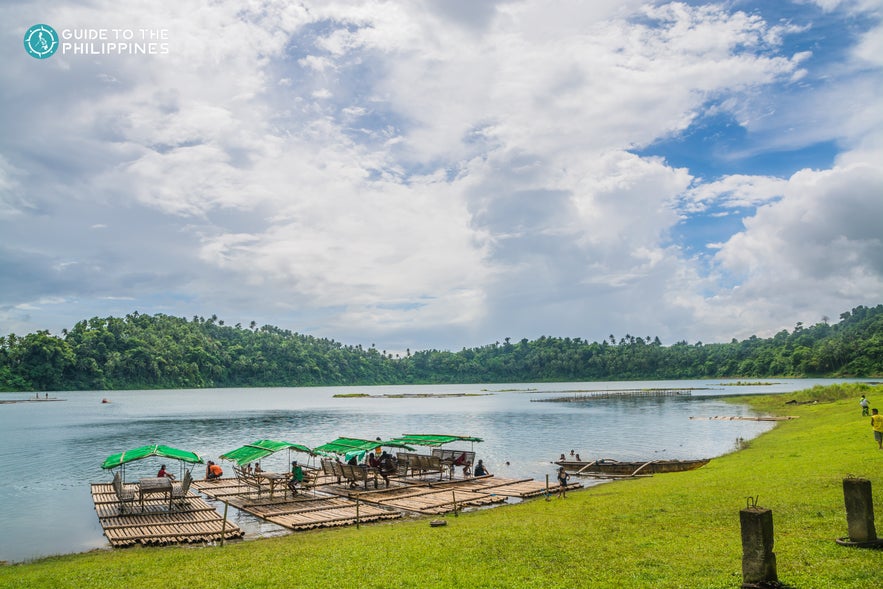
Apart from historical sites and resorts, Laguna is also home to the famed Seven Lakes of San Pablo, namely Sampaloc, Bunot, Calibato, Pandin, Yambo, Palakpakin, and Mohicap. These hidden wonders are nestled between Mt. Cristobal, Tayak Hill, Mt. Kalisungan, and Mt. Mabilog.
The origin of the seven lakes came from old tales. One of which talks about the birth of Sampaloc Lake. According to the famous legend, a couple once owned a tree bearing a sweet and tangy fruit called Sampaloc or tamarind. They refused to give some fruit to a fairy disguised as a beggar. The fairy punished them by drowning them into what the locals now call Sampaloc Lake.
As for geologists, the origin of the lakes came from the San Pablo Volcanic Field, which includes Mt. Makiling, Mt. Kalisungan, Mt. Atimla, Imoc Hill, and Mt. Mabilog. The seven lakes used to be craters of ancient volcanoes.
You can visit all of the seven lakes on a one-day road trip, which involves minor trekking. You can also explore just one part like in this Mt. Mabilog and Pandin Lake tour.
When you tour all lakes, your first stop is at Bunot Lake, home to cultured Tilapia Nilotica fingerlings. Up next is Calibato Lake, the deepest lake with an average depth of 156 meters. You can also see a waterfall nearby.
One of the highlights of your trip is visiting the twin lakes of Pandin and Yambo. The lakes are connected, both having pristine and clear waters. You can swim and even rent bamboo rafts to cruise along the lakes.
Your next stop is Lake Palakpakin, the second largest lake after Sampaloc. Lake Mohicap is also a sight to behold, overlooking the mountain ranges of Calauan. Your last destination is Sampaloc Lake, the largest among all the crater lakes.
3. Bahay ni Rizal
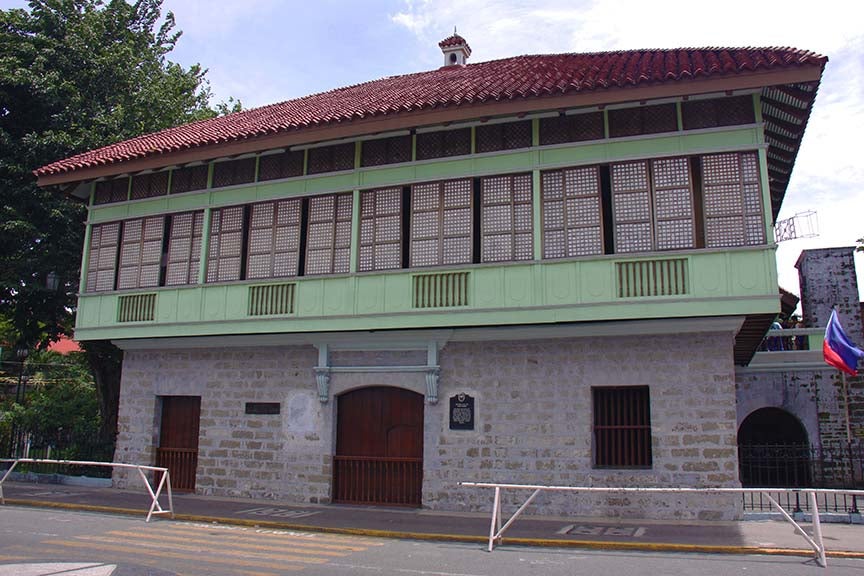
Photo by National Historical Commission of the Philippines
Just a hundred meters away from Calamba’s town plaza, you can find the Museo ni Jose Rizal, also known as the Rizal Shrine in Calamba. This 2-story stone house is the replica of the birthplace of the Philippine national hero Jose Rizal. Its structure is made of hardwood, bricks, and sliding windows with capiz shells. It is one of the must-visit historical tourist spots in the Philippines.
The wealth of Rizal’s family can be traced back to their principalian roots, a Filipino class rewarded with either a gobernadorcillo or cabeza de baranggay position. Both of his paternal and maternal grandparents came from an affluent family. Their wealthy lineage was passed down to Rizal’s family, one of the distinguished families in Laguna.
Rizal's spacious house and elegant furniture showcase his family's affluent lifestyle. There is even a basement where the animals and produce were kept. The Rizal’s stone house in Calamba is reminiscent of an upper-class Filipino home during the Spanish era.
The Museo ni Rizal has six galleries describing his early education and his notable travels in Europe. The Kaliwanagan features his family and childhood. Next, the Kapaligiran depicts the agricultural town of Calamba.
You can also check out Karunungan gallery to learn about his education at the Ateneo Municipal de Manila and Universidad de Santo Tomas. At Bahay-na-Bato gallery, you will find the heirlooms of his family.
Unang Paglalakbay sa Europa gallery exhibits his first expedition to Europe and the writing of his Noli Me Tángere novel. Lastly, Pangalawang Paglalakbay sa Europa gallery talks about his second journey to Europe and his other political writings, including El Filibusterismo.
The museum displays Rizal’s memorabilia and features interactive booths highlighting his national contributions. It shows a hologram of Rizal reading a letter for his Austrian friend Dr. Ferdinand Blumentritt. Students can also drop by the e-learning room to sit in online history lessons.
2. Pagsanjan Falls
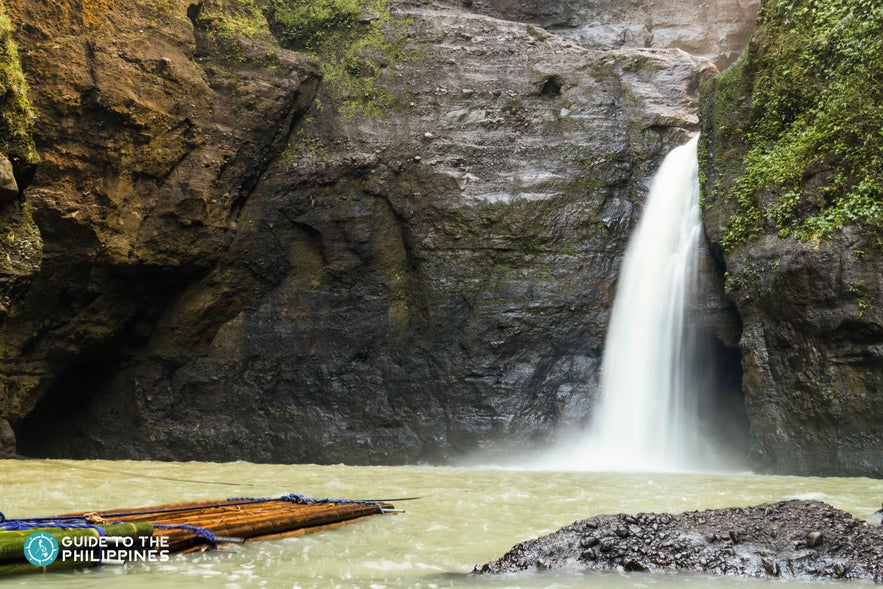
One of the most famous waterfalls in the Philippines and near Manila is the Pagsanjan Falls. In 1939, Pagsanjan Falls and its surrounding gorges were declared as a National Park. The waterfall is under the jurisdiction of Cavinti; however, the scenic river going to the falls is part of Pagsanjan town.
Pagsanjan Falls or Cavinti Falls is originally named Magdapio Falls. It is one of the earliest attractions after an American missionary discovered this three-drop waterfall in 1902. He called it Pagsanjan Falls, which is derived from the Filipino word Pinagsangahan or where it branches.
The cascades are branching off from two rivers, Bumbungan and Balanac. Meanwhile, there is a legend that tells about the origin of the falls. According to the tale, Magapio lost his brother Balubad in an ancient drought. He cried out to the gods, causing a waterfall to emerge from the river’s gorges.
During your Pagsanjan Falls tour, you can descend rapidly downstream or what they call the “shooting the rapids” boat activity. First, you will go on a short hike from Cavinti town. Then, you will take a river canoe that will pass through a 17km rocky stream.
You will raft across magnificent rock formations, where you will discover around 20 minor falls cascading from the mountains.
Prepare to enter over a hundred feet high gorges while your expert boatmen maneuver the boat through turbulent waters. You will pass beneath the waterfalls and through the Devil’s Cave. You can lean forward to get a relaxing waterfall back massage.
If you don’t want to go on a rapids tour, you may opt for an alternative hike from Pueblo El Salvador Eco-Park and Picnic Grove in Cavinti to reach the Pagsanjan Falls on foot. Expect to rappel and trek down a steep steel ladder that leads straight to the gorge.
1. Hot Springs in Laguna
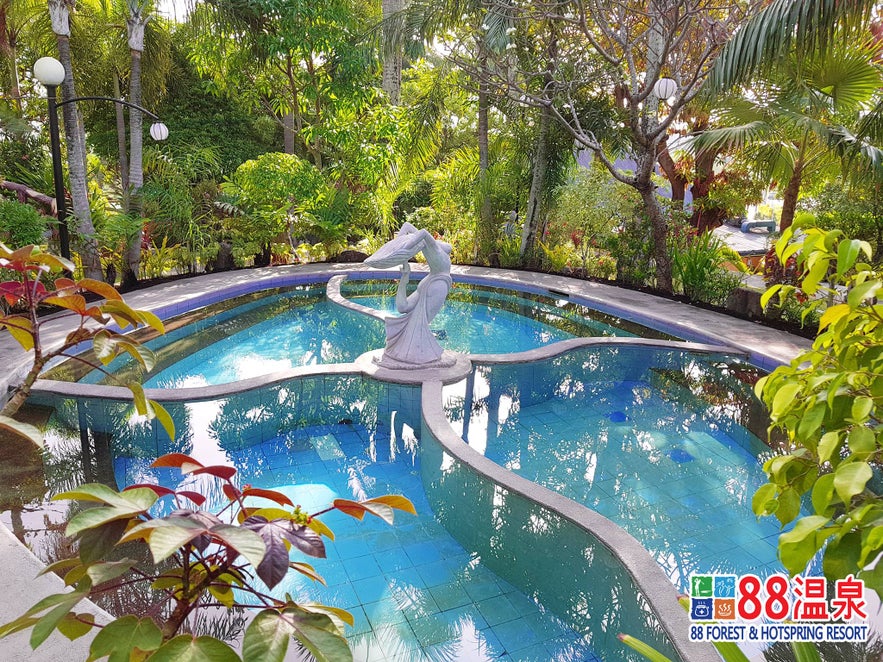
Photo by 88 Hot Spring Resort
The province of Laguna is deemed as a relaxing haven for those seeking peace and quiet near Manila. Among the must-see attractions here are the hot springs nestled along the foothills of Mt. Makiling. Most of the hot spring resorts in Laguna are concentrated in Los Baños, specifically in the Pansol area.
Not all resorts have thermal pools; however, most of them have natural pools with mineral-rich water and geothermal heat coming from the hot rocks of Mt. Makiling. Some people believe that hot springs can heal or treat some diseases. In fact, hot springs have high levels of sulfur that helps in reducing stress and improving blood circulation.
88 Hotspring Resort is one of the frequently visited and largest Laguna hot spring resorts near Manila. It has 11 outdoor pools and 8 dipping pools with varying degrees of heat where guests can take a 10-minute max dip. To make the most of your rejuvenating experience, you can try their Swedish and Shiatsu massage.
Sol Y Viento Mountain Spring Resort is one of the most accessible hot springs resorts overlooking the panoramic view of Mt. Makiling and Laguna de Bay. It is located along Km 55, Makiling Heights in Pansol, Calamba. Guests can take a refreshing dip into its jacuzzis and naturally heated swimming pools.
Hot spring massage treatments are perfect for those seeking tranquility and peace of mind, especially as rainy season activities in the Philippines. The mineral-rich waters can provide many health benefits, including stress reduction and better sleep patterns.
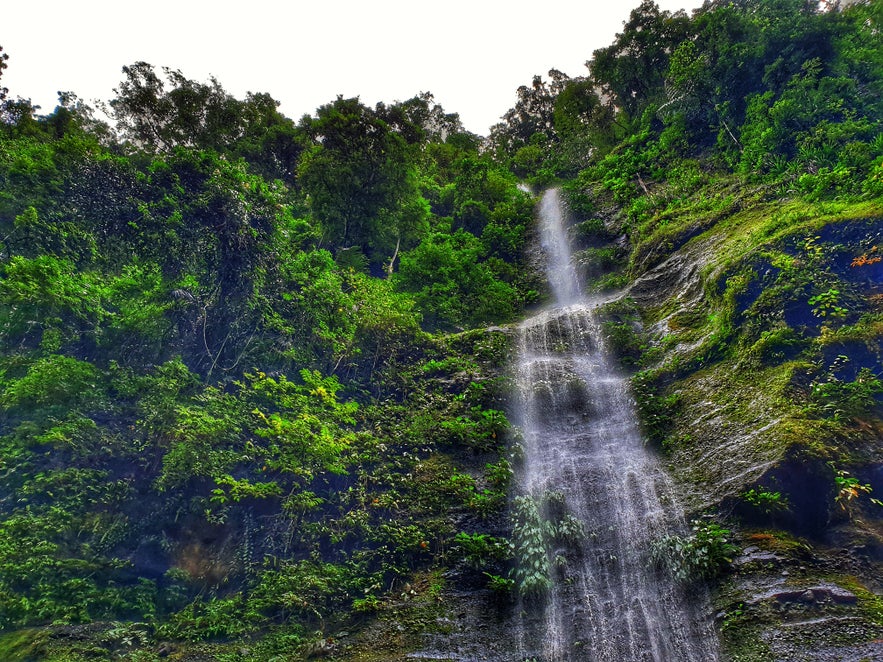
Plan Your Trip to Laguna
Laguna is a scenic province filled with century-old churches, museums, leisure parks, and enchanting waterfalls. Its vibrant cities and laid-back towns encompass Laguna de Bay, one of the largest lakes in Southeast Asia.
Having an array of cultural and natural attractions, Laguna never runs out of stunning and hidden wonders for travelers to explore. It boasts diverse flora and fauna that are greatly concentrated in Mount Makiling, one of the Philippines’ sought-after hiking spots.
While marveling at remarkable spots, you can also take a quick heritage tour around Spanish-built structures. Don’t miss out on the chance to drop by local shops and grab a bite of Laguna’s sweet delicacies like sweet espasol (toasted rice cake).
Begin planning your next dream getaway to Laguna! Find out the best Laguna tour packages highlighting the finest Laguna tourist spots. You can make the most of your Laguna tours by booking a staycation at Laguna resorts.



